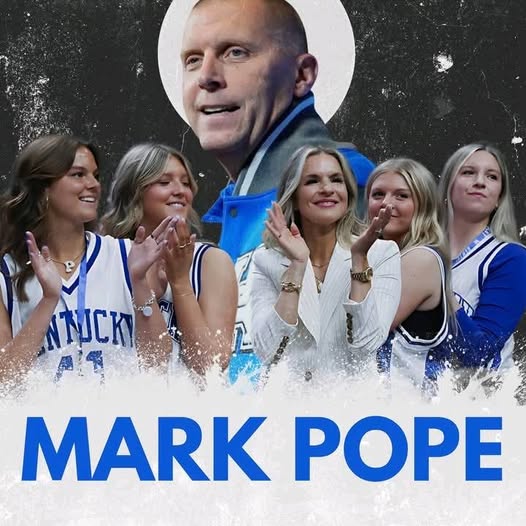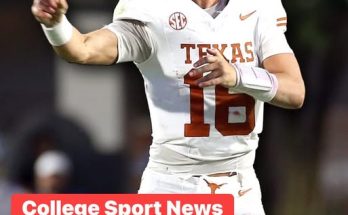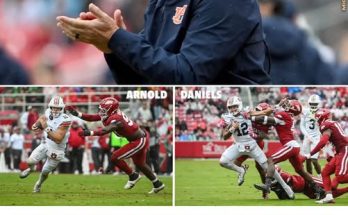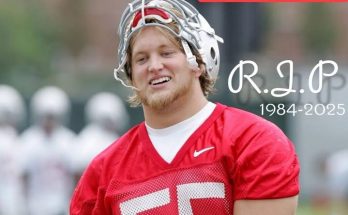From Crisis to Comeback: The Unbelievable Revival of Kentucky Basketball After Calipari
When John Calipari announced his departure from Kentucky, the basketball world collectively gasped. The man who had led the Wildcats for more than a decade, delivered a national championship in 2012, and consistently brought in elite recruiting classes was suddenly gone. To many, it felt like the end of an era—not just for Kentucky, but for college basketball at large. What followed his exit was chaos. Media pundits questioned Kentucky’s future, rival fanbases rejoiced, and within Big Blue Nation, there was a paralyzing sense of uncertainty. For the first time in years, Kentucky basketball didn’t feel like a sure thing.
Calipari’s final few seasons had been rocky by the lofty standards of the Kentucky program. First-round NCAA Tournament exits, inconsistencies with player development, and whispers of disconnect between Calipari and both fans and administration created an atmosphere where even his impressive legacy couldn’t mask the tension. Still, few believed he would leave, and fewer still imagined he would land at Arkansas of all places. It felt unthinkable. For a program that views itself not just as one of the blue bloods but the blue blood, losing its iconic head coach without a championship sendoff was more than a setback—it was a moment of identity crisis.
The initial aftermath was rough. Players decommitted. Transfer portal entries surged. The once-vaunted recruiting pipeline seemed to crack overnight. High school phenoms who once dreamed of donning Kentucky blue suddenly looked elsewhere. Critics claimed the program had become stale under Calipari’s “one-and-done” model, but without him, what was Kentucky’s identity? Administrators scrambled behind closed doors to stabilize the ship. The coaching search became a public spectacle, with rumors swirling around names like Scott Drew, Nate Oats, Dan Hurley, and even wild cards like Rick Pitino, whose controversial legacy with the program made his name both tantalizing and taboo. Yet none of those options materialized.
When Kentucky ultimately hired Mark Pope, it didn’t just raise eyebrows—it drew outright scorn from parts of the fanbase. A former Wildcat himself and a champion on the 1996 title team, Pope had coaching stops at BYU and Utah Valley, but his résumé didn’t scream Kentucky. He had never led a team past the second round of the NCAA Tournament. Critics labeled the hire as desperate, a safe choice aimed more at nostalgia than national titles. Social media lit up with skepticism. Fans wanted fireworks; they got a flicker.
But Mark Pope had something else—a vision. From his very first press conference, he made it clear that he understood what Kentucky basketball meant. Not just the championships, banners, and All-Americans, but the heartbeat of a fanbase that lived and breathed the sport. He acknowledged the legacy of Adolph Rupp, Joe B. Hall, Rick Pitino, Tubby Smith, and yes, even John Calipari. He didn’t try to erase history. He embraced it, then pointed the program toward the future.
That future didn’t look certain right away. In fact, Pope inherited a roster in shambles. Only a few scholarship players remained. The recruiting class had eroded. But Pope worked the portal with urgency and precision. He didn’t chase names for the sake of headlines. Instead, he targeted players who fit his system—high-IQ, unselfish, defensive-minded competitors. Within weeks, the new-look Wildcats started to take shape, anchored by a mix of returning veterans, underrated transfers, and a few key freshmen who decided to trust Pope’s vision rather than flee the chaos.
One of the most important moves Pope made was assembling a dynamic coaching staff that included both former Kentucky greats and experienced tacticians. It was a blend of old-school tradition and new-school strategy. The culture began to shift. What once felt like a fractured locker room was now unified under a shared mission: prove the doubters wrong and restore Kentucky to its rightful place among the nation’s elite.
That first season under Pope wasn’t perfect. There were growing pains. Early non-conference losses sparked renewed doubt. Every loss was scrutinized, every substitution questioned. But as the team settled into its identity—gritty, defensive-minded, and relentlessly competitive—something began to click. The Wildcats didn’t dominate the headlines the way they had under Calipari, but they earned respect where it mattered most: on the court.
By midseason, the new Kentucky was turning heads. Pope’s team played with a selflessness that hadn’t been seen in Lexington in years. Ball movement was crisp. Defensive rotations were disciplined. The offense was balanced, with multiple players averaging double figures. Fans who had initially met Pope with skepticism now filled Rupp Arena with a renewed sense of purpose. There was something special brewing.
Perhaps the turning point came during a dramatic overtime win against a top-5 ranked Tennessee team. It was a game that encapsulated everything Pope had instilled in his squad: resilience, focus, and a refusal to back down. After the final buzzer, the roar inside Rupp was deafening—not just in celebration of a win, but in recognition that Kentucky basketball was no longer lost. It was reborn.
The Wildcats would go on to finish the regular season with a top-three record in the SEC, a remarkable feat considering the upheaval just months prior. They entered the NCAA Tournament as a dangerous sleeper pick, not a dominant juggernaut but a team no one wanted to face. Pope’s blueprint was working. The “no-name” transfers were now March heroes. The fans who once feared irrelevance were now wearing Pope-themed shirts and chanting his name in postgame celebrations.
Even more impressive than the wins was the way the program reconnected with its identity. For years, some fans had felt that the NBA-focused nature of Calipari’s approach had made it harder to fall in love with the players. Under Pope, the bond was personal again. Players stayed after games to sign autographs. Practices were open. Community involvement surged. The mystique of Kentucky basketball—once dimmed—was now burning bright again.
The season ended in the Sweet 16, a hard-fought loss to a more experienced team. And yet, for the first time in years, a season-ending defeat wasn’t met with calls for firings or existential dread. It was met with pride. With belief. With hope. Pope stood at the podium after the loss and thanked the fans, not with coach-speak platitudes, but with genuine emotion. He knew what he had walked into. He knew what was at stake. And he had risen to the challenge.
In the weeks following that postseason run, Kentucky’s recruiting fortunes took a sharp upward turn. Top-tier high school talent once again began committing to the Wildcats, citing Pope’s style and authenticity. The transfer portal became a pipeline, not a patch. The national media that once doubted the hire now praised it as one of the boldest and most successful of the modern era.
What made the revival truly remarkable was how quickly it all happened. Kentucky didn’t just survive the loss of an icon—it evolved. The program that once leaned heavily on five-star freshmen now prided itself on player development and culture. It was a new blueprint, but one that still echoed the greatness of the past. The banners remained. The tradition endured. But under Mark Pope, Kentucky had found a new way to win.
Perhaps that’s the legacy of this improbable turnaround. It wasn’t about erasing what came before, but building upon it with a different set of tools. It was about rediscovering what made Kentucky special in the first place: a relentless pursuit of excellence, a fanbase that refuses to settle, and a belief that no setback is ever final.
From crisis to comeback, Kentucky basketball proved that greatness isn’t tied to one coach or one era. It’s woven into the very fabric of the program. And as the lights shine down on Rupp Arena once more, it’s clear that the Cats are not just back—they’re built to last.



